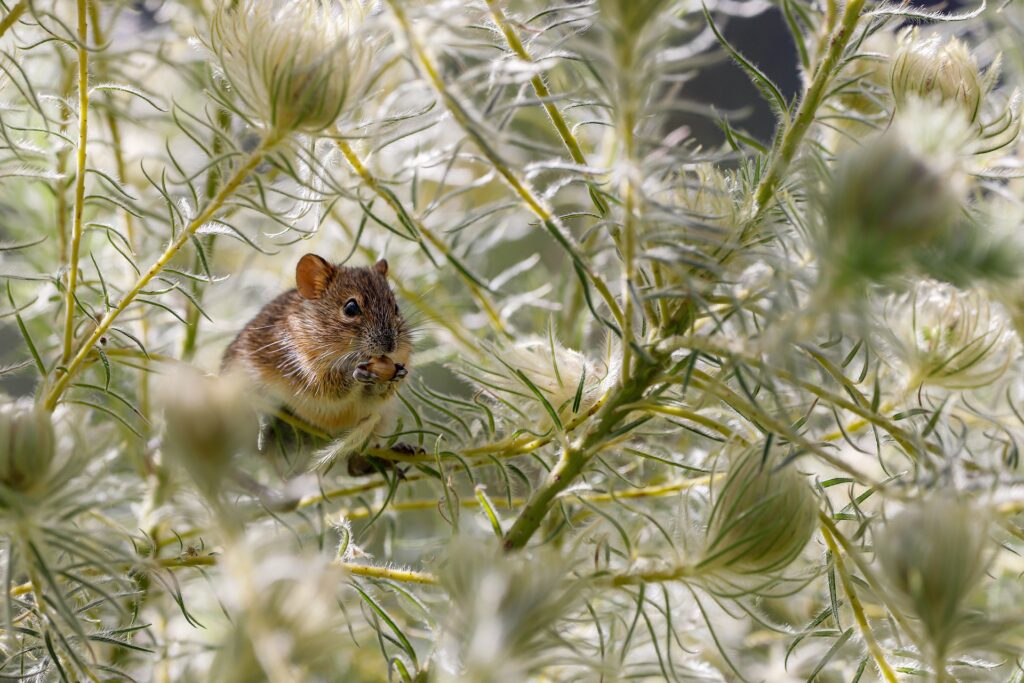You’ve seen an unfortunate sight: tiny bugs in your home. What are they? Identifying them is the first step toward controlling them. Unfortunately, these small bugs could be a serious problem.
They could be baby cockroaches.
Baby cockroaches are much smaller than adults and appear lighter in color—sometimes even white or gray. Young roaches don’t yet have wings and often stay close to where they hatched. Unfortunately, baby cockroaches are likely a sign that an infestation is already present in your home.
Baby roaches, called nymphs, are small—1/4” or even smaller. They mature by molting—shedding their exoskeleton and growing a new one—repeatedly. Cockroach nymphs can be different colors, depending on their age and how recently they molted. They share most of the physical characteristics of adult roaches but their wings won’t yet be fully formed.
Some cockroach species have colored markings as adults but their babies don’t. You can distinguish baby German cockroaches from the nymphs of other species by looking at their colors: they are often dark brown or almost black—closer to their adult color, while other species tend to be lighter while they’re young.
Species of baby cockroaches that you might find in your house include:
- American cockroaches
- Brown Banded cockroaches
- German cockroaches
- Oriental cockroaches
- Smokybrown cockroaches
What Are White Cockroaches?
You might be puzzled to find small, white or gray cockroaches in your kitchen or bathroom. White cockroaches are a normal part of the life cycle of these bugs when they’re young. Cockroaches in the nymph stage molt several times as they grow. After a baby has shed its dark exoskeleton, it will appear white or grayish until its new exoskeleton becomes harder and returns to its normal color.
White cockroaches are not rare; they all molt, after all. However, seeing a white roach is rare because roaches are particularly vulnerable just after they’ve molted. They usually wait in a safe hiding spot until their new exoskeleton becomes more protective.
Life Cycle: Baby Cockroaches to Adults
Adult female cockroaches lay their eggs in an egg sac in a dark, hidden area near food and moisture. The egg sacs are tiny and roaches can hide them in small cracks in the floor or a tiny corner of a cabinet.
One species that differs from this behavior is the German cockroach. Female German cockroaches carry their eggs with them until the eggs are ready to hatch. The roach keeps its eggs on its abdomen while it moves around and scavenges for food.
Baby cockroaches can hatch just days after a female lays eggs. One egg sac can produce dozens of tiny roaches, which can grow to adulthood in just a few months. These baby roaches probably won’t venture far in search of food until they’ve at least partially matured. With even a few cockroaches present in a home, the spread of an infestation can happen quickly.
Baby Cockroaches Signal a Larger Infestation
Adult cockroaches might enter homes for several basic reasons: water, food and shelter. If one or more cockroaches find easily accessible sources of food and water in a house (or other building), they will likely search for a hidden place to live and reproduce there.
Generally, young cockroaches prefer to stay in out-of-reach areas near the place where they hatched. They don’t spread out far looking for food or another place to live if they can avoid it. If you see baby cockroaches in your home, there is probably an existing infestation of adult roaches.
Bathrooms and kitchens are common places for cockroaches to live indoors. Warmth and humidity make these rooms ideal habitats for cockroaches while vents and drains are easy entry points from outside. If an adult cockroach can find a suitable place in a bathroom or kitchen, it will probably lay its eggs there, too.
Why Are Baby Cockroaches a Problem?
The existence of baby cockroaches in your house means that adults have gotten in and reproduced. And that means it’s time to take action.
For those curious about the physical features of these pests, baby cockroaches, such as the American, German, and Oriental varieties, usually start as small as a few millimeters in size. Visually, what does a baby roach look like? If you’re trying to distinguish between baby roach species, you’ll find that German roach nymphs are darker and more distinctive compared to the relatively lighter hue of newborn American cockroaches. These cockroach nymphs lack the fully developed wings of their adult counterparts, making them less mobile but not any less of a nuisance and they will grow quickly!
Cockroaches are dangerous pests. Although they won’t bite you like spiders or wasps, they’ll quickly contaminate food and cooking surfaces. Cockroaches can carry serious diseases and make parts of your home unsanitary, putting you and your family at risk. Molting cockroaches can also irritate people with asthma, allergies and other respiratory illnesses.
As mentioned baby cockroaches grow up relatively quickly. If they are not controlled, an infestation can grow rapidly. Roaches are notoriously resilient, so your best chance of preventing a dangerous infestation is calling a professional.
Call Aptive Environmental for Effective Cockroach Control
Aptive Environmental has the tools and expertise to control cockroaches in your home. We use professional and effective methods to manage infestations of any size. Our experts are trained to target cockroaches and other pests without interrupting your lifestyle. We provide convenient, effective pest control that’s tailored to your needs.
Protect your home by contacting Aptive Environmental today.









